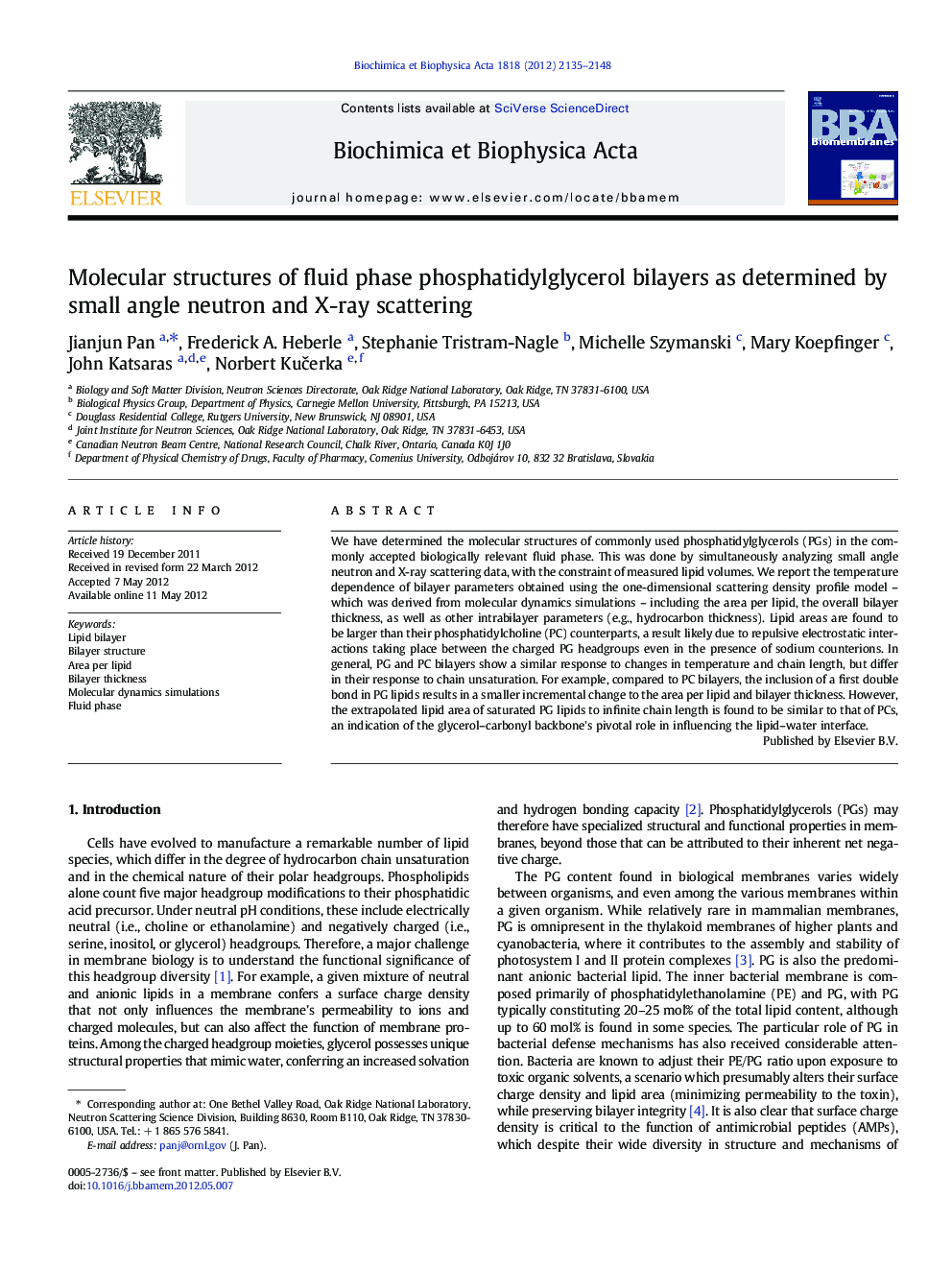| Article ID | Journal | Published Year | Pages | File Type |
|---|---|---|---|---|
| 1944438 | Biochimica et Biophysica Acta (BBA) - Biomembranes | 2012 | 14 Pages |
We have determined the molecular structures of commonly used phosphatidylglycerols (PGs) in the commonly accepted biologically relevant fluid phase. This was done by simultaneously analyzing small angle neutron and X-ray scattering data, with the constraint of measured lipid volumes. We report the temperature dependence of bilayer parameters obtained using the one-dimensional scattering density profile model – which was derived from molecular dynamics simulations – including the area per lipid, the overall bilayer thickness, as well as other intrabilayer parameters (e.g., hydrocarbon thickness). Lipid areas are found to be larger than their phosphatidylcholine (PC) counterparts, a result likely due to repulsive electrostatic interactions taking place between the charged PG headgroups even in the presence of sodium counterions. In general, PG and PC bilayers show a similar response to changes in temperature and chain length, but differ in their response to chain unsaturation. For example, compared to PC bilayers, the inclusion of a first double bond in PG lipids results in a smaller incremental change to the area per lipid and bilayer thickness. However, the extrapolated lipid area of saturated PG lipids to infinite chain length is found to be similar to that of PCs, an indication of the glycerol–carbonyl backbone's pivotal role in influencing the lipid–water interface.
